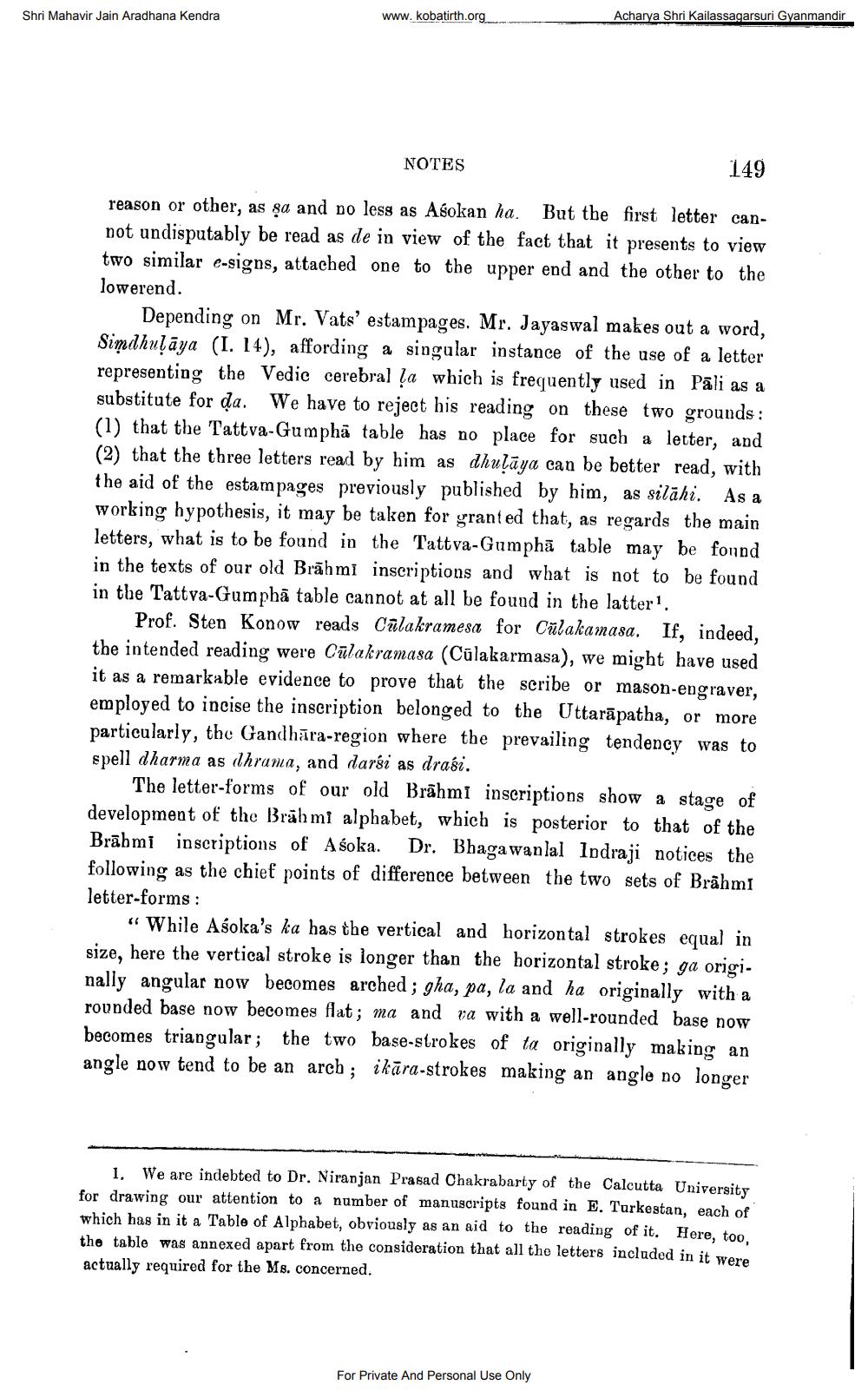________________
www.kobatirth.org.
Acharya Shri Kailassagarsuri Gyanmandir
Shri Mahavir Jain Aradhana Kendra
NOTES
149
reason or other, as sa and no less as Asokan ha. But the first letter cannot undisputably be read as de in view of the fact that it presents to view two similar e-signs, attached one to the upper end and the other to the lowerend.
Depending on Mr. Vats' estampages. Mr. Jayaswal makes out a word, Simdhuļāya (I. 14), affording a singular instance of the use of a letter representing the Vedic cerebral ļa which is frequently used in Pāli as a substitute for da. We have to reject his reading on these two grounds: (1) that the Tattva-Gumphä table has no place for such a letter, and (2) that the three letters read by him as dhulāya can be better read, with the aid of the estampages previously published by him, as silähi. As a working hypothesis, it may be taken for granted that, as regards the main letters, what is to be found in the Tattva-Gumphā table may be found in the texts of our old Brāhmi inscriptions and what is not to be found in the Tattva-Gumphā table cannot at all be found in the latter
Prof. Sten Konow reads Calakramesa for Cūlakamasa, If, indeed, the intended reading were Culakramasa (Cūlakarmasa), we might have used it as a remarkable evidence to prove that the scribe or mason-engraver, employed to incise the inscription belonged to the Uttarāpatha, or more particularly, the Gandhāra-region where the prevailing tendency was to spell dharma as lhrama, and darsi as draới.
The letter-forms of our old Brāhmi inscriptions show a stage of development of the Brähmi alphabet, which is posterior to that of the Brābmi inscriptions of Asoka. Dr. Bhagawanlal Ipdraji notices the following as the chief points of difference between the two sets of Brāhmi letter-forms:
“While Asoka's ka has the vertical and horizontal strokes equal in size, here the vertical stroke is longer than the horizontal stroke; ga originally angular now becomes arched; gha, pa, la and ha originally with a rounded base now becomes flat; ma and va with a well-rounded base now becomes triangular; the two base-strokes of ta originally making an angle now tend to be an arch; ikāra-strokes making an angle no longer
1. We are indebted to Dr. Niranjan Prasad Chakrabarty of the Calcutta University for drawing our attention to a number of manuscripts found in E. Tarkestan, each of which has in it a Table of Alphabet, obviously as an aid to the reading of it. Here, too. the table was annexed apart from the consideration that all the letters included in it were actually required for the Ms. concerned.
For Private And Personal Use Only




